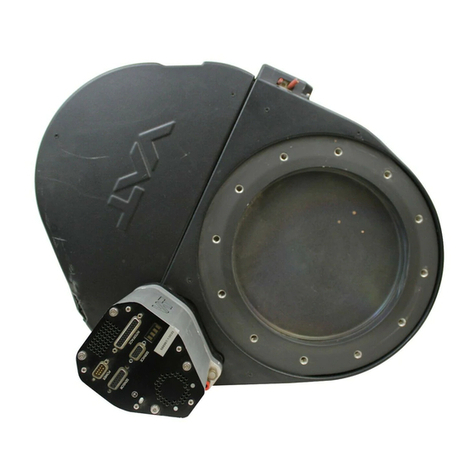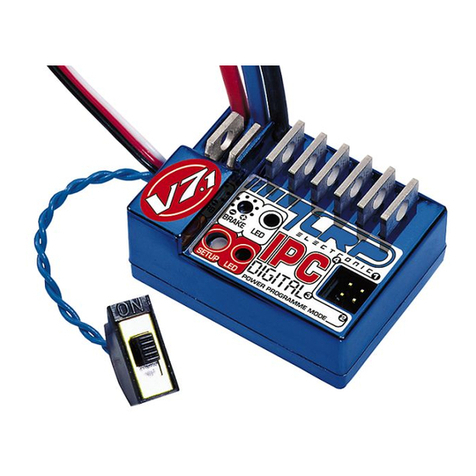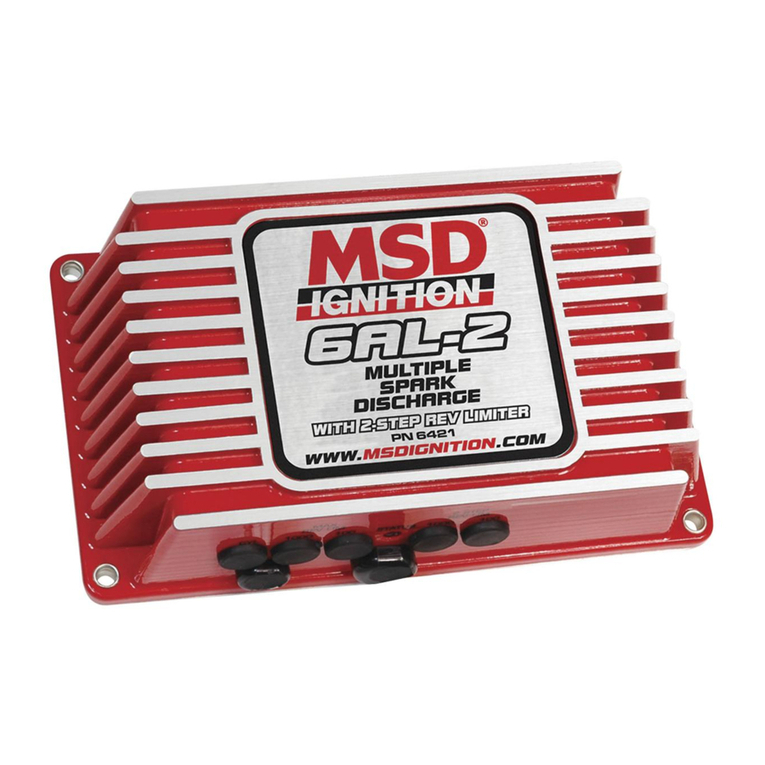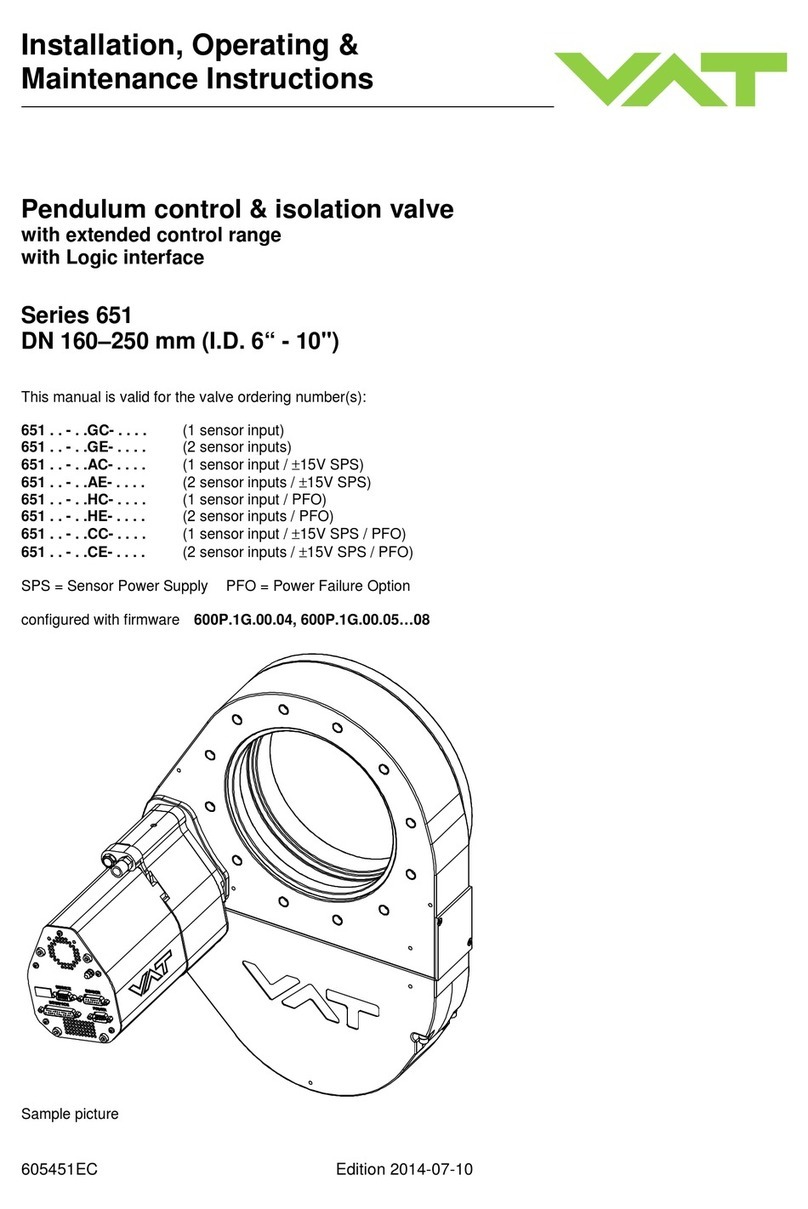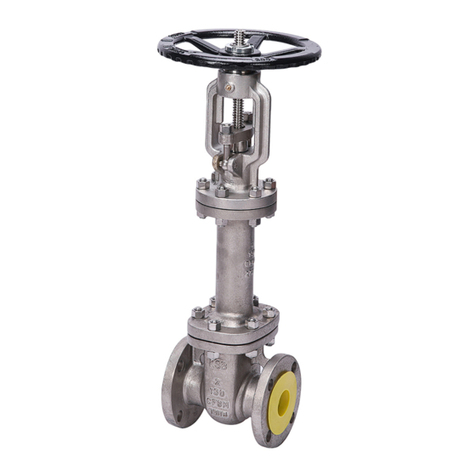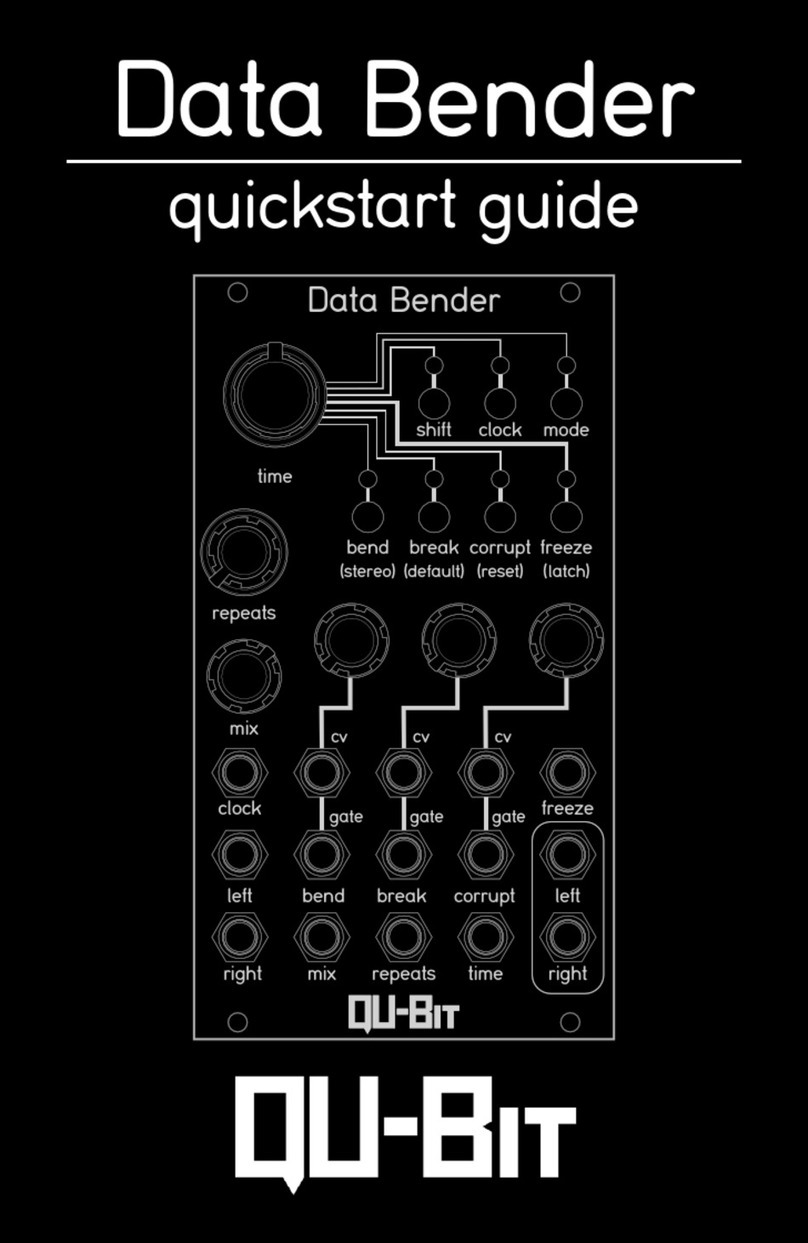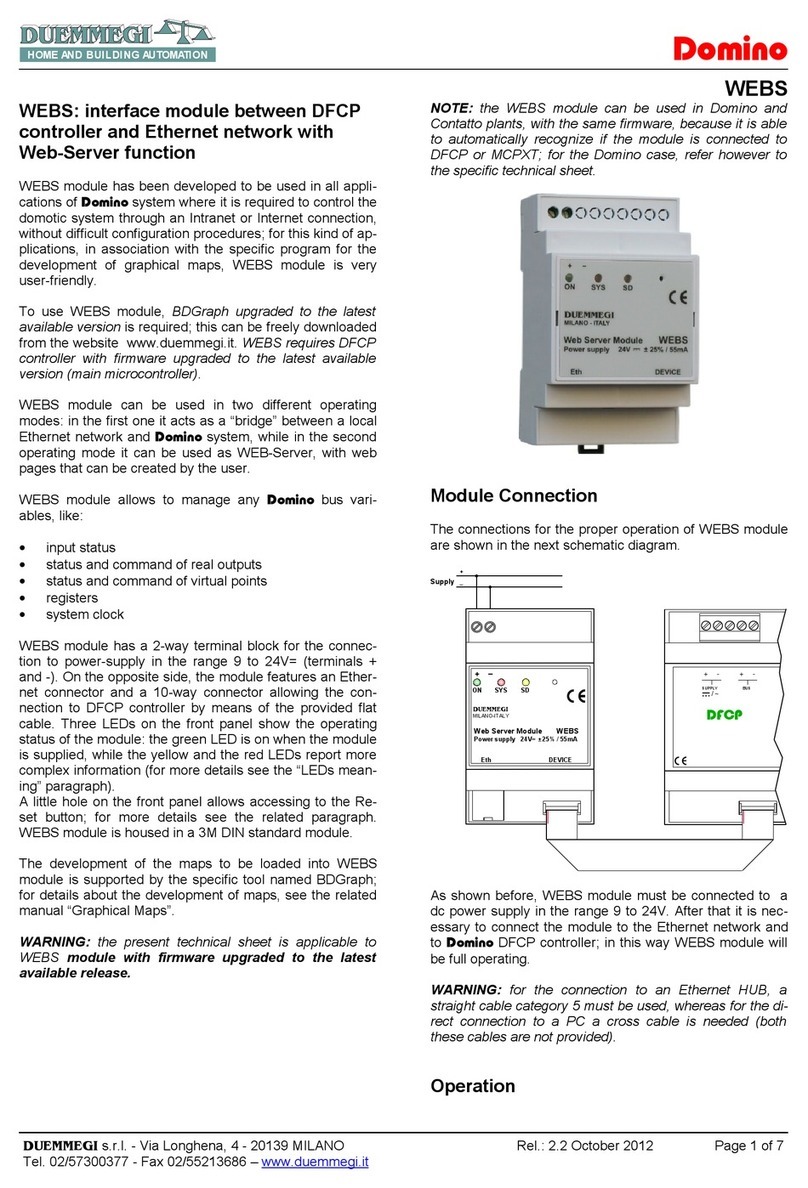ADB Safegate FCU-1 User manual

Flashing System Installation
Types FCU-3-in-1 and FCU-1-in-1
User Manual
UM-4018_AM02-620e, Rev. 3.0, 2020/05/12


A.0 Disclaimer / Standard Warranty
CE certification
The equipment listed as CE certified means that the product complies with the essential requirements concerning safety and
hygiene. The European directives that have been taken into consideration in the design are available on written request to
ADB SAFEGATE.
ETL certification
The equipment listed as ETL certified means that the product complies with the essential requirements concerning safety and
FAA Airfield regulations. The FAA directives that have been taken into consideration in the design are available on written
request to ADB SAFEGATE.
All Products Guarantee
ADB SAFEGATE will correct by repair or replacement per the applicable guarantee above, at its option, equipment or parts
which fail because of mechanical, electrical or physical defects, provided that the goods have been properly handled and
stored prior to installation, properly installed and properly operated after installation, and provided further that Buyer gives
ADB SAFEGATE written notice of such defects after delivery of the goods to Buyer. Refer to the Safety section for more
information on Material Handling Precautions and Storage precautions that must be followed.
ADB SAFEGATE reserves the right to examine goods upon which a claim is made. Said goods must be presented in the same
condition as when the defect therein was discovered. ADB SAFEGATE furthers reserves the right to require the return of such
goods to establish any claim.
ADB SAFEGATE's obligation under this guarantee is limited to making repair or replacement within a reasonable time after
receipt of such written notice and does not include any other costs such as the cost of removal of defective part, installation
of repaired product, labor or consequential damages of any kind, the exclusive remedy being to require such new parts to be
furnished.
ADB SAFEGATE's liability under no circumstances will exceed the contract price of goods claimed to be defective. Any returns
under this guarantee are to be on a transportation charges prepaid basis. For products not manufactured by, but sold by ADB
SAFEGATE, warranty is limited to that extended by the original manufacturer. This is ADB SAFEGATE's sole guarantee and
warranty with respect to the goods; there are no express warranties or warranties of fitness for any particular purpose or any
implied warranties of fitness for any particular purpose or any implied warranties other than those made expressly herein. All
such warranties being expressly disclaimed.
Standard Products Guarantee
Products of ADB SAFEGATE manufacture are guaranteed against mechanical, electrical, and physical defects (excluding lamps)
which may occur during proper and normal use for a period of two years from the date of ex-works delivery, and are
guaranteed to be merchantable and fit for the ordinary purposes for which such products are made.
Note
See your sales order contract for a complete warranty description.
FAA Certified product installed in the United States or in US Military installations guarantee
ADB SAFEGATE L858 Airfield Guidance Signs are warranted against mechanical and physical defects in design or manufacture
for a period of 2 years from date of installation, per FAA AC 150/5345-44 (applicable edition).
ADB SAFEGATE L858(L) Airfield Guidance Signs are warranted against electrical defects in design or manufacture of the LED or
LED specific circuitry for a period of 4 years from date of installation, per FAA EB67 (applicable edition).
ADB SAFEGATE LED light fixtures (with the exception of obstruction lighting) are warranted against electrical defects in design
or manufacture of the LED or LED specific circuitry for a period of 4 years from date of installation, per FAA EB67 (applicable
edition). .
UM-4018_AM02-620e, Rev. 3.0, 2020/05/12 iii
Copyright © ADB Safegate, All Rights Reserved

Note
See your sales order contract for a complete warranty description.
Liability
WARNING
Use of the equipment in ways other than described in the catalog leaflet and the manual may result in personal injury,
death, or property and equipment damage. Use this equipment only as described in the manual.
ADB SAFEGATE cannot be held responsible for injuries or damages resulting from non-standard, unintended uses of its
equipment. The equipment is designed and intended only for the purpose described in the manual. Uses not described in the
manual are considered unintended uses and may result in serious personal injury, death or property damage.
Unintended uses, includes the following actions:
•Making changes to equipment that have not been recommended or described in this manual or using parts that are not
genuine ADB SAFEGATE replacement parts or accessories.
•Failing to make sure that auxiliary equipment complies with approval agency requirements, local codes, and all applicable
safety standards if not in contradiction with the general rules.
•Using materials or auxiliary equipment that are inappropriate or incompatible with your ADB SAFEGATE equipment.
•Allowing unskilled personnel to perform any task on or with the equipment.
© ADB SAFEGATE BV
This manual or parts thereof may not be reproduced, stored in a retrieval system, or transmitted, in any form or by any means,
electronic, mechanical, photocopying, recording, nor otherwise, without ADB SAFEGATE BV's prior written consent.
This manual could contain technical inaccuracies or typographical errors. ADB SAFEGATE BV reserves the right to revise this
manual from time to time in the contents thereof without obligation of ADB SAFEGATE BV to notify any person of such
revision or change. Details and values given in this manual are average values and have been compiled with care. They are not
binding, however, and ADB SAFEGATE BV disclaims any liability for damages or detriments suffered as a result of reliance on
the information given herein or the use of products, processes or equipment to which this manual refers. No warranty is made
that the use of the information or of the products, processes or equipment to which this manual refers will not infringe any
third party's patents or rights. The information given does not release the buyer from making their own experiments and
tests.
Flashing System Installation
iv
Copyright © ADB Safegate, All Rights Reserved

TABLE OF CONTENTS
1.0 Safety ....................................................................................................................................................................................... 1
1.1 Safety Messages ........................................................................................................................................................................................................ 1
1.1.1 Introduction to Safety ................................................................................................................................................................................. 2
1.1.2 Intended Use .................................................................................................................................................................................................. 2
1.1.3 Material Handling Precautions: Storage .............................................................................................................................................. 3
1.1.4 Material Handling: Heavy Equipment .................................................................................................................................................. 3
1.1.5 Material Handling Precautions: Fasteners .......................................................................................................................................... 3
1.1.6 Operation Safety ........................................................................................................................................................................................... 4
1.1.7 Laser Safety Information ........................................................................................................................................................................... 4
1.1.8 Maintenance Safety ..................................................................................................................................................................................... 6
1.1.9 Material Handling Precautions, ESD ..................................................................................................................................................... 7
1.1.10 Arc Flash and Electric Shock Hazard ................................................................................................................................................... 7
2.0 About this manual ................................................................................................................................................................. 9
2.1 How to Work with the Manual ............................................................................................................................................................................. 9
2.2 Abbreviations and terms ........................................................................................................................................................................................ 9
3.0 Introduction .......................................................................................................................................................................... 11
3.1 Flashing system overview .................................................................................................................................................................................... 11
3.2 Lay-out of the equipment cabinets ................................................................................................................................................................. 12
3.2.1 FCU-1 .............................................................................................................................................................................................................. 12
3.2.2 FCU-3 .............................................................................................................................................................................................................. 13
3.2.3 LMC ................................................................................................................................................................................................................. 14
3.3 Intended use ............................................................................................................................................................................................................. 14
3.4 Description ................................................................................................................................................................................................................ 14
3.5 Local Master Controller (LMC) description ................................................................................................................................................... 15
3.6 Options ....................................................................................................................................................................................................................... 16
3.7 Remote control description (option) .............................................................................................................................................................. 16
4.0 Inspection and transport .................................................................................................................................................... 19
4.1 Inspect equipment on delivery ......................................................................................................................................................................... 19
4.2 How to transport the crate ................................................................................................................................................................................. 19
4.3 Unpack at installation area ................................................................................................................................................................................. 19
5.0 Pre-installation ..................................................................................................................................................................... 21
5.1 How to pre-install - general procedure ......................................................................................................................................................... 21
5.2 Plan cables and lay-out of cables ..................................................................................................................................................................... 21
5.2.1 Power supply cable to equipment cabinets .................................................................................................................................... 21
5.3 Connection between equipment and flasher heads ................................................................................................................................. 22
5.3.1 Earthing wires for equipment cabinets ............................................................................................................................................. 22
5.3.2 Local bus cables ......................................................................................................................................................................................... 22
5.3.3 Cables to remote control interface ..................................................................................................................................................... 22
5.4 Design and cast concrete foundations .......................................................................................................................................................... 24
5.4.1 Cast concrete foundations ..................................................................................................................................................................... 26
5.4.2 Install earthing / counterpoise system .............................................................................................................................................. 26
5.5 Install cables on site .............................................................................................................................................................................................. 27
6.0 Installation ............................................................................................................................................................................ 29
6.1 Installation - general procedure ....................................................................................................................................................................... 29
6.2 Check pre-installation ........................................................................................................................................................................................... 29
6.3 Required tools .......................................................................................................................................................................................................... 29
6.4 Install ........................................................................................................................................................................................................................... 29
6.4.1 Install equipment cabinets ..................................................................................................................................................................... 29
6.4.2 Install Local Master Controller (LMC) ................................................................................................................................................. 30
6.4.3 Install external temperature probe ..................................................................................................................................................... 31
6.5 Install electrical connections .............................................................................................................................................................................. 33
6.5.1 Switch OFF power supply ....................................................................................................................................................................... 33
UM-4018_AM02-620e, Rev. 3.0, 2020/05/12 v
Copyright © ADB Safegate, All Rights Reserved

6.5.2 Connect power input supply ................................................................................................................................................................. 33
6.5.3 Connect power output to flash units ................................................................................................................................................. 34
6.5.4 Connect LMC ............................................................................................................................................................................................... 35
6.5.5 Connect local bus ...................................................................................................................................................................................... 35
6.5.6 Install remote control connections ..................................................................................................................................................... 36
7.0 PCB drawings and settings ................................................................................................................................................. 39
7.1 FCU - PCB1487 ........................................................................................................................................................................................................ 39
7.1.1 Layout of the Printed Circuit Board (PCB) ........................................................................................................................................ 39
7.1.2 Connectors ................................................................................................................................................................................................... 40
7.1.3 Straps .............................................................................................................................................................................................................. 41
7.1.4 Dip-switchesT .............................................................................................................................................................................................. 42
7.1.5 LEDs ................................................................................................................................................................................................................. 43
7.2 Local bus connection board - PCB1498 ......................................................................................................................................................... 43
7.2.1 Layout of the Printed Circuit Board (PCB) ........................................................................................................................................ 43
7.2.2 Connectors ................................................................................................................................................................................................... 43
7.3 Local Master Controller (LMC) - PCB1513 .................................................................................................................................................... 44
7.3.1 Layout of the Printed Circuit Board (PCB) ........................................................................................................................................ 44
7.3.2 Straps .............................................................................................................................................................................................................. 45
7.3.3 Rotary and dip-switches ......................................................................................................................................................................... 45
7.3.4 LEDs ................................................................................................................................................................................................................. 47
7.4 Multiwire - PCB1486 .............................................................................................................................................................................................. 48
7.4.1 Layout of the Printed Circuit Board (PCB) ........................................................................................................................................ 48
7.4.2 Straps .............................................................................................................................................................................................................. 49
7.4.3 Connectors table ........................................................................................................................................................................................ 49
7.4.4 Input terminals ............................................................................................................................................................................................ 49
7.4.5 Output terminals ........................................................................................................................................................................................ 50
7.4.6 Control signals ............................................................................................................................................................................................ 52
7.4.7 Multiwire default settings ....................................................................................................................................................................... 52
7.5 J-Bus Connection - PCB1502 ............................................................................................................................................................................. 53
7.5.1 Layout of the Printed Circuit Board (PCB) ........................................................................................................................................ 54
7.5.2 Connectors ................................................................................................................................................................................................... 55
7.5.3 Slave connections ...................................................................................................................................................................................... 56
7.6 Dongle ........................................................................................................................................................................................................................ 56
7.6.1 Dip-switches ................................................................................................................................................................................................ 56
7.6.2 LEDs ................................................................................................................................................................................................................. 57
7.7 Wiring diagrams ...................................................................................................................................................................................................... 57
8.0 Technical data ....................................................................................................................................................................... 59
8.1 Technical characteristics ....................................................................................................................................................................................... 59
8.2 Ambient conditions ............................................................................................................................................................................................... 59
A.0 SUPPORT .............................................................................................................................................................................. 61
A.1 ADB SAFEGATE Website ...................................................................................................................................................................................... 61
A.2 Recycling .................................................................................................................................................................................................................... 61
A.2.1 Local Authority Recycling ....................................................................................................................................................................... 61
A.2.2 ADB SAFEGATE Recycling ....................................................................................................................................................................... 62
Flashing System Installation
TABLE OF CONTENTS
vi
Copyright © ADB Safegate, All Rights Reserved

List of Tables
Table 1: Laser Information ...................................................................................................................................................................................................... 6
Table 2: Terms and abbreviations ........................................................................................................................................................................................ 9
Table 3: Multiwire options ................................................................................................................................................................................................... 17
Table 4: Power supply cable cross-sections and length ........................................................................................................................................... 22
Table 5: Recommended local bus communication cables ...................................................................................................................................... 22
Table 6: Recommended multiwire cables ...................................................................................................................................................................... 23
Table 7: Wire sections and cable lengths for multiwire cables .............................................................................................................................. 23
Table 8: Wire sections for J-Bus cables ........................................................................................................................................................................... 24
Table 9: Table: 6.1 Check list ................................................................................................................................................................................................ 29
Table 10: FCU PCB connectors ........................................................................................................................................................................................... 40
Table 11: Wire connections for TB2 for UEL type flasher head ............................................................................................................................. 40
Table 12: Wire connections for TB2 for FFL type flasher head .............................................................................................................................. 41
Table 13: FCU straps ............................................................................................................................................................................................................... 41
Table 14: Resistor settings ................................................................................................................................................................................................... 42
Table 15: FCU PCB dip-switch settings ........................................................................................................................................................................... 42
Table 16: Functions. ................................................................................................................................................................................................................ 43
Table 17: Local bus connectors .......................................................................................................................................................................................... 43
Table 18: LMC PCB straps ..................................................................................................................................................................................................... 45
Table 19: LMC PCB dip-switch settings. .......................................................................................................................................................................... 46
Table 20: Functions. ................................................................................................................................................................................................................ 47
Table 21: Multiwire PCB straps ........................................................................................................................................................................................... 49
Table 22: Multiwire PCB connectors ................................................................................................................................................................................. 49
Table 23: Functions for connector P ................................................................................................................................................................................ 49
Table 24: Connection P2 wires, per power supply type ........................................................................................................................................... 50
Table 25: Functions for connector P1 .............................................................................................................................................................................. 50
Table 26: Connect P1 wires, per power supply type .................................................................................................................................................. 52
Table 27: Multiwire options ................................................................................................................................................................................................. 52
Table 28: Default back-indication signals ...................................................................................................................................................................... 53
Table 29: Default remote control signals ....................................................................................................................................................................... 53
Table 30: J-Bus connectors .................................................................................................................................................................................................. 55
Table 31: Wiring for connectors P1-P4 ........................................................................................................................................................................... 55
Table 32: Technical characteristics .................................................................................................................................................................................... 59
Table 33: Ambient conditions ............................................................................................................................................................................................. 59
UM-4018_AM02-620e, Rev. 3.0, 2020/05/12 vii
Copyright © ADB Safegate, All Rights Reserved

Flashing System Installation
List of Tables
viii
Copyright © ADB Safegate, All Rights Reserved

1.0 Safety
Introduction to Safety
This section contains general safety instructions for installing and using ADB SAFEGATE equipment. Some safety instructions
may not apply to the equipment in this manual. Task- and equipment-specific warnings are included in other sections of this
manual where appropriate.
1.1 Safety Messages
HAZARD Icons used in the manual
For all HAZARD symbols in use, see the Safety section. All symbols must comply with ISO and ANSI standards.
Carefully read and observe all safety instructions in this manual, which alert you to safety hazards and conditions that may
result in personal injury, death or property and equipment damage and are accompanied by the symbol shown below.
WARNING
Failure to observe a warning may result in personal injury, death or equipment damage.
DANGER - Risk of electrical shock or ARC FLASH
Disconnect equipment from line voltage. Failure to observe this warning may result in personal injury, death, or
equipment damage. ARC Flash may cause blindness, severe burns or death.
WARNING - Wear personal protective equipment
Failure to observe may result in serious injury.
WARNING - Do not touch
Failure to observe this warning may result in personal injury, death, or equipment damage.
CAUTION
Failure to observe a caution may result in equipment damage.
Qualified Personnel
Important Information
The term qualified personnel is defined here as individuals who thoroughly understand the equipment and its safe
operation, maintenance and repair. Qualified personnel are physically capable of performing the required tasks, familiar
with all relevant safety rules and regulations and have been trained to safely install, operate, maintain and repair the
equipment. It is the responsibility of the company operating this equipment to ensure that its personnel meet these
requirements.
Always use required personal protective equipment (PPE) and follow safe electrical work practice.
UM-4018_AM02-620e, Rev. 3.0, 2020/05/12 1
Copyright © ADB Safegate, All Rights Reserved

1.1.1 Introduction to Safety
CAUTION
Unsafe Equipment Use
This equipment may contain electrostatic devices, hazardous voltages and sharp edges on components
• Read installation instructions in their entirety before starting installation.
• Become familiar with the general safety instructions in this section of the manual before installing,
operating, maintaining or repairing this equipment.
• Read and carefully follow the instructions throughout this manual for performing specific tasks and
working with specific equipment.
• Make this manual available to personnel installing, operating, maintaining or repairing this
equipment.
• Follow all applicable safety procedures required by your company, industry standards and
government or other regulatory agencies.
• Install all electrical connections to local code.
• Use only electrical wire of sufficient gauge and insulation to handle the rated current demand. All
wiring must meet local codes.
• Route electrical wiring along a protected path. Make sure they will not be damaged by moving
equipment.
• Protect components from damage, wear, and harsh environment conditions.
• Allow ample room for maintenance, panel accessibility, and cover removal.
• Protect equipment with safety devices as specified by applicable safety regulations
• If safety devices must be removed for installation, install them immediately after the work is
completed and check them for proper functioning prior to returning power to the circuit.
Failure to follow this instruction can result in serious injury or equipment damage
Additional Reference Materials
Important Information
•IEC - International Standards and Conformity Assessment for all electrical, electronic and related technologies.
•IEC 60364 - Electrical Installations in Buildings.
•FAA Advisory: AC 150/5340-26 (current edition), Maintenance of Airport Visual Aid Facilities.
•Maintenance personnel must refer to the maintenance procedure described in the ICAO Airport Services Manual,
Part 9.
•ANSI/NFPA 79, Electrical Standards for Metalworking Machine Tools.
•National and local electrical codes and standards.
1.1.2 Intended Use
CAUTION
Use this equipment as intended by the manufacturer
This equipment is designed to perform a specific function, do not use this equipment for other purposes
• Using this equipment in ways other than described in this manual may result in personal injury, death
or property and equipment damage. Use this equipment only as described in this manual.
Failure to follow this instruction can result in serious injury or equipment damage
Flashing System Installation
Safety
2
Copyright © ADB Safegate, All Rights Reserved

1.1.3 Material Handling Precautions: Storage
CAUTION
Improper Storage
Store this equipment properly
• If equipment is to be stored prior to installation, it must be protected from the weather and kept free
of condensation and dust.
Failure to follow this instruction can result in equipment damage
1.1.4 Material Handling: Heavy Equipment
DANGER
Unstable load
Use caution when moving heavy equipment
• Use extreme care when moving heavy equipment.
• Verify that the moving equipment is rated to handle the weight.
• When removing equipment from a shipping pallet, carefully balance and secure it using a safety
strap.
Failure to follow this instruction can result in death, serious injury, or equipment damage
1.1.5 Material Handling Precautions: Fasteners
DANGER
Foreign Object Damage - FOD
This equipment may contain fasteners that may come loose - torque properly.
• Only use fasteners of the same type as the one originally supplied with the equipment.
• Use of incorrect combination of gaskets, bolts and nuts can create severe damages to the product
installation and create safety risk .
• You need to know what base the light fixture will be installed in, in order to chose the correct gasket,
bolts and nuts.
• Bolt type, length, and torque value are determined by type of base, height of spacers used, and clamp
force required in FAA Engineering Brief No 83 (latest revision).
• Due to the risk of bolts vibrating loose, do not use any type of washer with the fixing bolts (such as
split lock washers) other than an anti-vibration washer. Anti-vibration washers as defined in FAA EB
83 (latest edition) must be used. For installations other than FAA, use the base can manufacturer's
recommendations.
• Always tighten the fasteners to the recommended torque. Use a calibrated torque wrench and apply
the recommended adhesive type.
• Obey the instructions of the adhesives necessary for the fasteners.
Failure to follow these warnings may cause the fasteners to loosen, damage the equipment,
potentially to loosen the equipment. This can lead to a highly dangerous situation of FOD, with
potential lethal consequences.
Note
To minimize the risk of errors, the ADB SAFEGATE Sales Representative will have information on which gasket goes
with which base. This information is also provided in the product Data sheets, the User Manuals and the Spare Part
Lists.
UM-4018_AM02-620e, Rev. 3.0, 2020/05/12 3
Copyright © ADB Safegate, All Rights Reserved

CAUTION
Use of incorrect combination of gaskets, bolts and nuts can create severe damages to the product installation and
create multiple safety risks.
To obtain a safe and watertight installation the O-ring and retaining bolt stated in the document must be used.
You need to know what base the light fixture will be installed in, in order to choose the correct gasket, bolts and nuts.
Failure to follow these cautions can result in equipment damage or aircraft FOD.
1.1.6 Operation Safety
CAUTION
Improper Operation
Do Not Operate this equipment other than as specified by the manufacturer
• Only qualified personnel, physically capable of operating the equipment and with no impairments in
their judgment or reaction times, should operate this equipment.
• Read all system component manuals before operating this equipment. A thorough understanding of
system components and their operation will help you operate the system safely and efficiently.
• Before starting this equipment, check all safety interlocks, fire-detection systems, and protective
devices such as panels and covers. Make sure all devices are fully functional. Do not operate the
system if these devices are not working properly. Do not deactivate or bypass automatic safety
interlocks or locked-out electrical disconnects or pneumatic valves.
• Protect equipment with safety devices as specified by applicable safety regulations.
• If safety devices must be removed for installation, install them immediately after the work is
completed and check them for proper functioning.
• Route electrical wiring along a protected path. Make sure they will not be damaged by moving
equipment.
• Never operate equipment with a known malfunction.
• Do not attempt to operate or service electrical equipment if standing water is present.
• Use this equipment only in the environments for which it is rated. Do not operate this equipment in
humid, flammable, or explosive environments unless it has been rated for safe operation in these
environments.
• Never touch exposed electrical connections on equipment while the power is ON.
Failure to follow these instructions can result in equipment damage
1.1.7 Laser Safety Information
Safedock system is an Advanced Visual Docking Guidance System, an aircraft parking aid for airport and aircraft safety and
efficiency. The design is according to strict airport industry standards for the safety of, and use by authorised airport
personnel.
CAUTION
The chapter Operating procedures must be distributed to all airlines using the system.
•Airport Operations, Maintenance and other Authorised Personnel
•This information is a summary of the safety requirements on operation and maintenance personnel based on
general electrical and laser safety precautions.
Flashing System Installation
Safety
4
Copyright © ADB Safegate, All Rights Reserved

CAUTION
It is very important for authorised personnel to study this section before any operation or maintenance work on the
system is commenced.
•Safedock system should only be used by airport operations and maintenance personnel who have been properly
trained in the use of the system. ADB SAFEGATE takes no responsibility for incorrect use of the system. All
warnings contained in the text of this manual must be strictly observed.
•Airport operations and maintenance personnel are strongly advised to observe the following symbols and safety
advisories.
CLASS 1 LASER PRODUCT
EN IEC 60525-1 2007
Complies with 21 CFR 1040 10
Except for DEVIATIONS
PURSUANT to LASER NOTICE
NO. 54, DATED June 24, 2007
CAUTION
Laser Safety
Store this equipment properly
• Safedock system is a Class 1 laser product, which means that it is safe under foreseeable conditions
of operation, including the use of optical instruments for intra beam viewing.
• The Laser Scanning Unit compartment of the Pilot Display unit contains a Laser Range Finder, which is
a Class 1M laser product. A Class 1M laser product is safe under foreseeable conditions of operation,
but may be hazardous, if the user employs optical instruments within the beam, e.g. binoculars or
telescope.
Failure to follow this instruction can result in permanenet eye injury.
CLASS 1 LASER PRODUCT
EN IEC 60525-1 2007
Complies with 21 CFR 1040 10
Except for DEVIATIONS
PURSUANT to LASER NOTICE
NO. 54, DATED June 24, 2007
CAUTION
Invisible Laser Radiation
Store this equipment properly
• The laser output from this system is within Class 1 limits (USA FDA 21 CFR 1040.10 – 11 and IEC
60825-1, 2nd Edition: 2007) as long as the range finder is installed and operated as specified by ADB
SAFEGATE.
• If operated in any other fashion than described, the range finder is capable of emitting radiation up
to Class 1M limits.
Failure to follow this instruction can result in permanenet eye injury.
UM-4018_AM02-620e, Rev. 3.0, 2020/05/12 5
Copyright © ADB Safegate, All Rights Reserved

CLASS 1 LASER PRODUCT
EN IEC 60525-1 2007
Complies with 21 CFR 1040 10
Except for DEVIATIONS
PURSUANT to LASER NOTICE
NO. 54, DATED June 24, 2007
CAUTION
Eye Safety
Store this equipment properly
• ADB SAFEGATE accepts no liability for the misuse of its equipment or for the consequences of this
misuse.
• ADB SAFEGATE recommends that eye safety procedures be followed in accordance with ANSI Z136.1
– 1993 or IEC 60825-1 during maintenance.
• The laser beam exiting the window of the Safedock enclosure is within Class 1 limit for eye safety,
when the product is operated as specified by ADB SAFEGATE.
• To provide eye safety the user is advised to treat this laser unit as a Class 1 M laser product. Class 1 M
denotes lasers or laser systems that can produce a hazard if viewed through light collecting optics
such as binoculars.
Failure to follow this instruction can result in permanenet eye injury.
Table 1: Laser Information
For the laser the following values apply:
•Pulse width ~ 10 ns
•Wavelength 905 nm
CAUTION
If the laser by any reason should be switched on and used outside the docking system, safety procedures may
include, but are not necessarily limited to the following:
•Do not stare into the laser beam.
•Do not view the beam with binoculars or other devices that collect light.
•Do not point the laser at people.
CAUTION
Do not point the laser range finder at the sun.
1.1.8 Maintenance Safety
DANGER
Electric Shock Hazard
This equipment may contain electrostatic devices
• Do not operate a system that contains malfunctioning components. If a component malfunctions,
turn the system OFF immediately.
• Disconnect and lock out electrical power.
• Allow only qualified personnel to make repairs. Repair or replace the malfunctioning component
according to instructions provided in its manual.
Failure to follow these instructions can result in death or equipment damage
Flashing System Installation
Safety
6
Copyright © ADB Safegate, All Rights Reserved

1.1.9 Material Handling Precautions, ESD
CAUTION
Electrostatic Sensitive Devices
This equipment may contain electrostatic devices
• Protect from electrostatic discharge.
• Electronic modules and components should be touched only when this is unavoidable e.g. soldering,
replacement.
• Before touching any component of the cabinet you shall bring your body to the same potential as the
cabinet by touching a conductive earthed part of the cabinet.
• Electronic modules or components must not be brought in contact with highly insulating materials
such as plastic sheets, synthetic fiber clothing. They must be laid down on conductive surfaces.
• The tip of the soldering iron must be grounded.
• Electronic modules and components must be stored and transported in conductive packing.
Failure to follow this instruction can result in equipment damage
1.1.10 Arc Flash and Electric Shock Hazard
DANGER
Series Circuits have Hazardous Voltages
This equipment produces high voltages to maintain the specified current - Do NOT Disconnect while
energized.
• Allow only qualified personnel to perform maintenance, troubleshooting, and repair tasks.
• Only persons who are properly trained and familiar with ADB SAFEGATE equipment are permitted to
service this equipment.
• An open airfield current circuit is capable of generating >5000 Vac and may appear OFF to a meter.
• Never unplug a device from a constant current circuit while it is operating; Arc flash may result.
• Disconnect and lock out electrical power.
• Always use safety devices when working on this equipment.
• Follow the recommended maintenance procedures in the product manuals.
• Do not service or adjust any equipment unless another person trained in first aid and CPR is present.
• Connect all disconnected equipment ground cables and wires after servicing equipment. Ground all
conductive equipment.
• Use only approved ADB SAFEGATE replacement parts. Using unapproved parts or making
unapproved modifications to equipment may void agency approvals and create safety hazards.
• Check the interlock systems periodically to ensure their effectiveness.
• Do not attempt to service electrical equipment if standing water is present. Use caution when
servicing electrical equipment in a high-humidity environment.
• Use tools with insulated handles when working with airfield electrical equipment.
Failure to follow these instructions can result in death or equipment damage
UM-4018_AM02-620e, Rev. 3.0, 2020/05/12 7
Copyright © ADB Safegate, All Rights Reserved

Flashing System Installation
Safety
8
Copyright © ADB Safegate, All Rights Reserved

2.0 About this manual
This document includes information with focus on safety, installation and maintenance procedures.
For more information, see www.adbsafegate.com.
Note
It is very important to read this document before any work is started.
The manual covers installation of the following:
•FCU-1 and FCU-3
If in the manual the term equipment used, this refers to both the FCU-1 and FCU-3.
2.1 How to Work with the Manual
1. Familiarize yourself with the structure and content.
2. Carry out the actions completely and in the given sequence.
2.2 Abbreviations and terms
Table 2: Terms and abbreviations
Abbreviation and term Description
AC Alternating Current
ALFS-1 Flashing mode: Approach Light System with
Sequenced Flasher heads (ILS Cat- I configuration)
ALFS-2 Flashing mode: Approach Light System with
Sequenced Flasher heads (ILS Cat-II configuration)
AWG American Wire Gauge
Binary notation All data in the digital circuits is treated using “1” and “0”. Thus, all decimal notations are transcripted into binary
notations.
CPU Central processing unit
DC Direct Current
E²PROM Electronically Erasable Programmable Read-Only
Memory
Equipment Both FCU-1 and FCU-3, if the information is the same
FAA Federal Aviation Administration
Fastener Generic term for an item that holds the equipment together or that holds the equipment on its mounting
support, e.g. nut, bolt, washer
FCU Flasher Control Unit
FE-LiYCY A type of flexible multi-core cable
FFL ADB type inset flashing head
Flasher head An elevated or inset flashing light
Flasher unit A combination of flashing electronics and flasher head
Flashing rhythm The rhythm in which the flashing system flashes. The flashing rhythm consists of two elements: cycle time and
sequence time.
Flashing system A number of flashing units operating as an RTILS or sequenced flashing system
UM-4018_AM02-620e, Rev. 3.0, 2020/05/12 9
Copyright © ADB Safegate, All Rights Reserved

Table 2: Terms and abbreviations (continued)
Abbreviation and term Description
Hexadecimal notation This is a way to write numbers in base of 16, instead of the standard 10. In the manual, it is used for bits and
addresses, because it identifies better the active data address or data lines (16 or 8-bit large).
ICAO International Civil Aviation Organisation
IGBT Isolated Gate Bipolar Transistor
LMC Local Master Controller
Local bus The communication bus, which exchanges data and control signals between the FCUs and the LMC.
MALSF Flashing mode: Medium-intensity Approach Lighting
System with Sequenced Flasher heads
MALSR Flashing mode: Medium-intensity Approach Lighting
System with Runway alignment indicator
Mod bus The communication bus, which communicates with the customer control system.
MOV Metal-Oxide Varistor
MW Multiwire
ODALS Omni Directional Approach Lighting System
PC Personal Computer
PCB Printed Circuit Board
PCMCIA Personal Computer Memory Card International
Association
PE Protective Earth
PU PolyUrethane
RC circuit Circuit wit a resistance and a capacity
REILS Runway End Identification Lighting System
RTILS Runway Threshold Identification Lighting System
SMPS Switched Mode Power Supply
SSALR Flashing mode: Simplified Short Approach Lighting
System with Runway alignment indicator
SSALS Flashing mode: Simplified Short Approach Lighting
System with Sequenced flasher heads
TWAVBI Type of armored multiwire underground signalization cable
UEL Unidirectional Elevated Light type (ADB type elevated flashing head)
WAGO Brand of spring leaf connectors
Flashing System Installation
About this manual
10
Copyright © ADB Safegate, All Rights Reserved

3.0 Introduction
3.1 Flashing system overview
The illustration shows a schematic overview of the components of a flashing system. The design plan shows the actual lay-
out. A flashing system can contain up to 32 flashing heads.
Every flashing system has one LMC. The LMC can be installed in an FCU-1 cabinet or in a FCU- 3 cabinet.
UM-4018_AM02-620e, Rev. 3.0, 2020/05/12 11
Copyright © ADB Safegate, All Rights Reserved

3.2 Lay-out of the equipment cabinets
3.2.1 FCU-1
Flashing System Installation
Introduction
12
Copyright © ADB Safegate, All Rights Reserved
This manual suits for next models
1
Table of contents
Popular Control Unit manuals by other brands
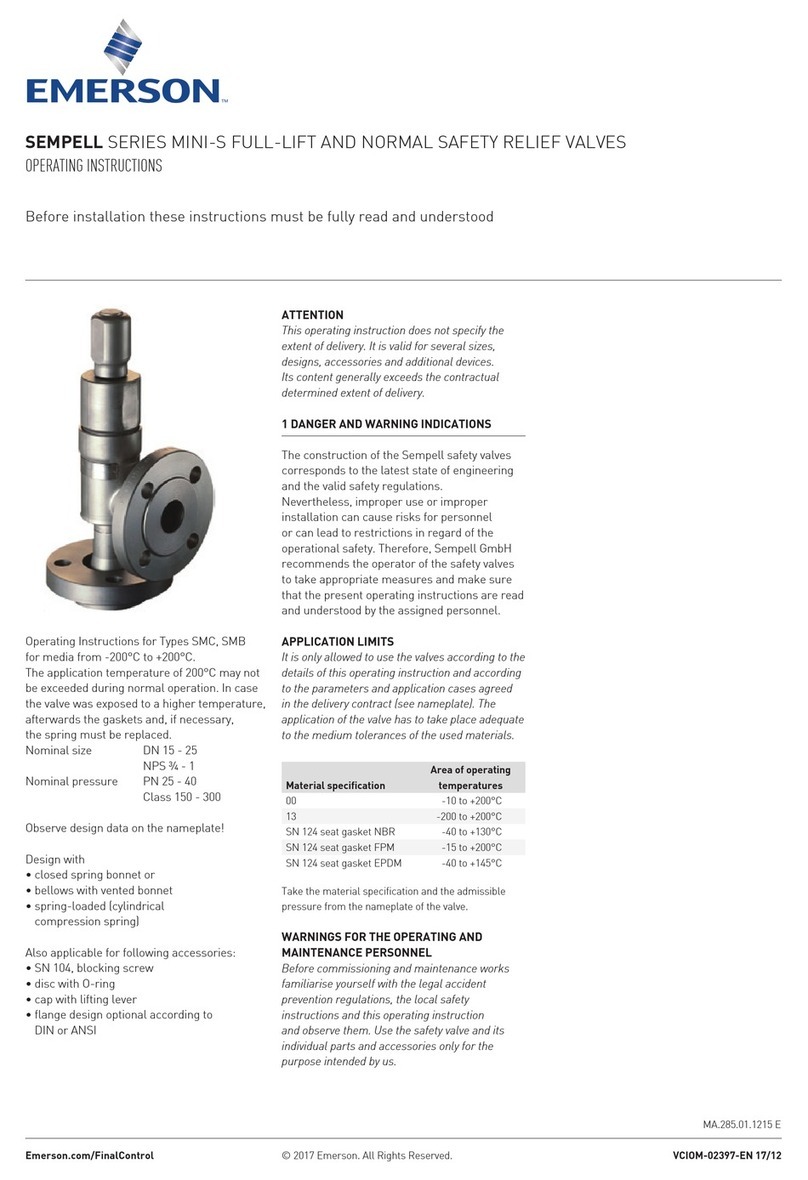
Emerson
Emerson Sempell series operating instructions
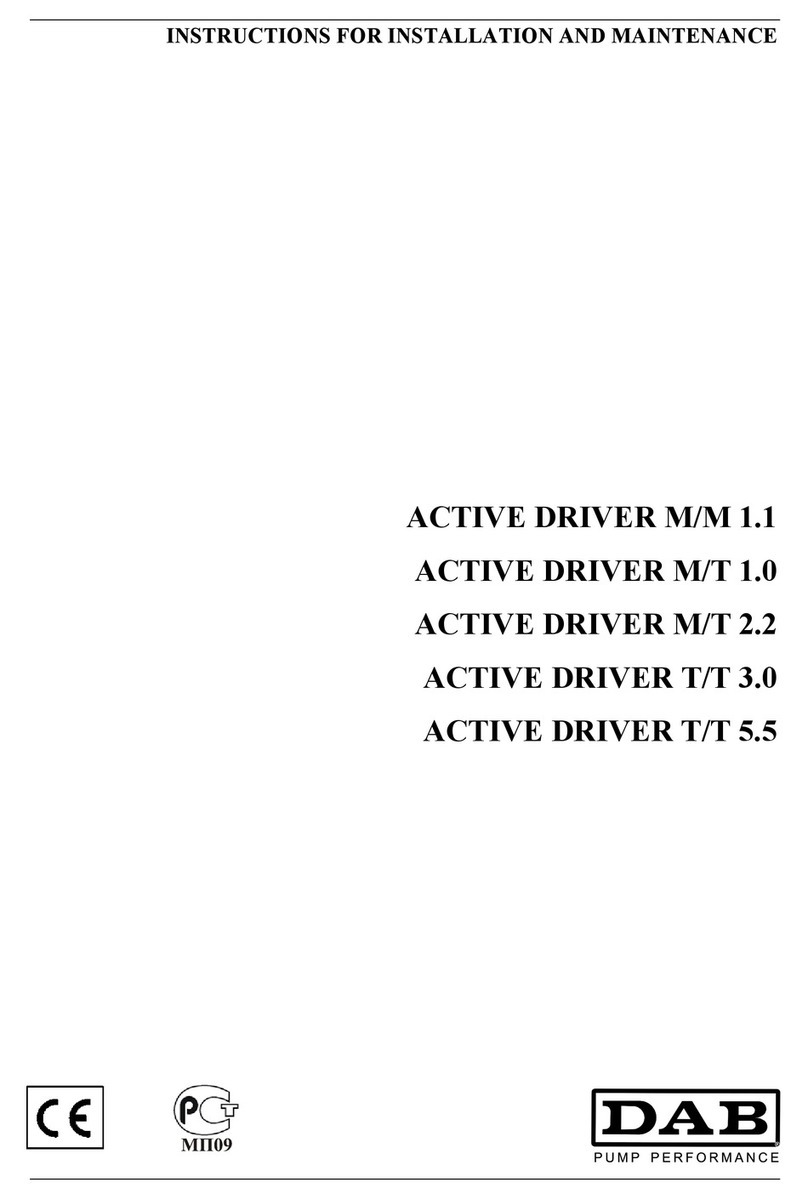
DAB PUMPS
DAB PUMPS ACTIVE DRIVER M/M 1.1 Instruction for installation and maintenance
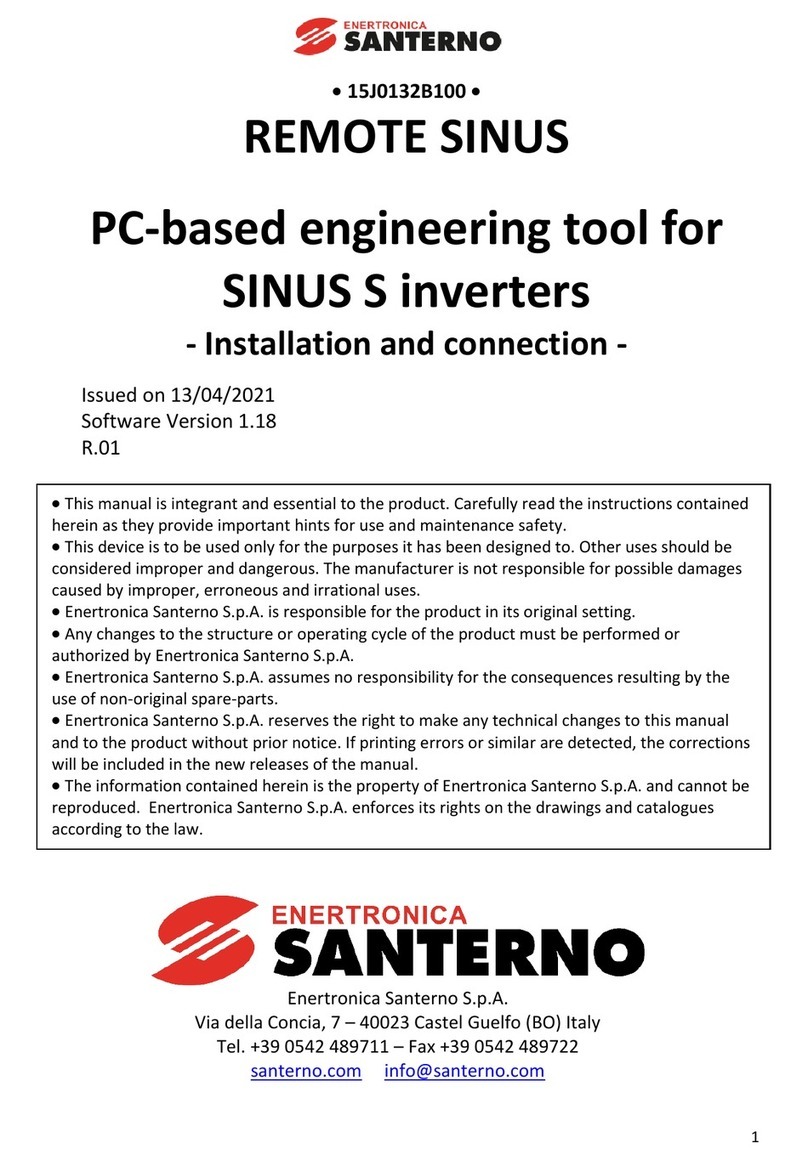
Enertronica Santerno
Enertronica Santerno ZZ0132033 manual
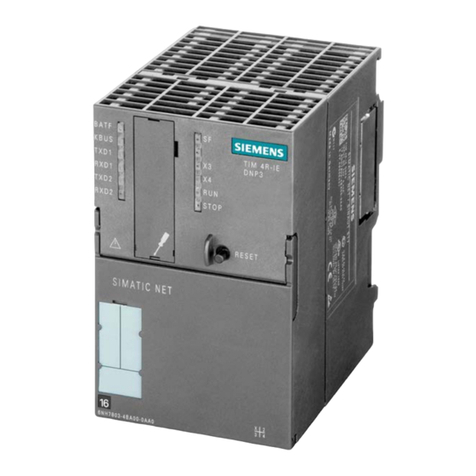
Siemens
Siemens SIMATIC TIM 3V-IE DNP3 System manual
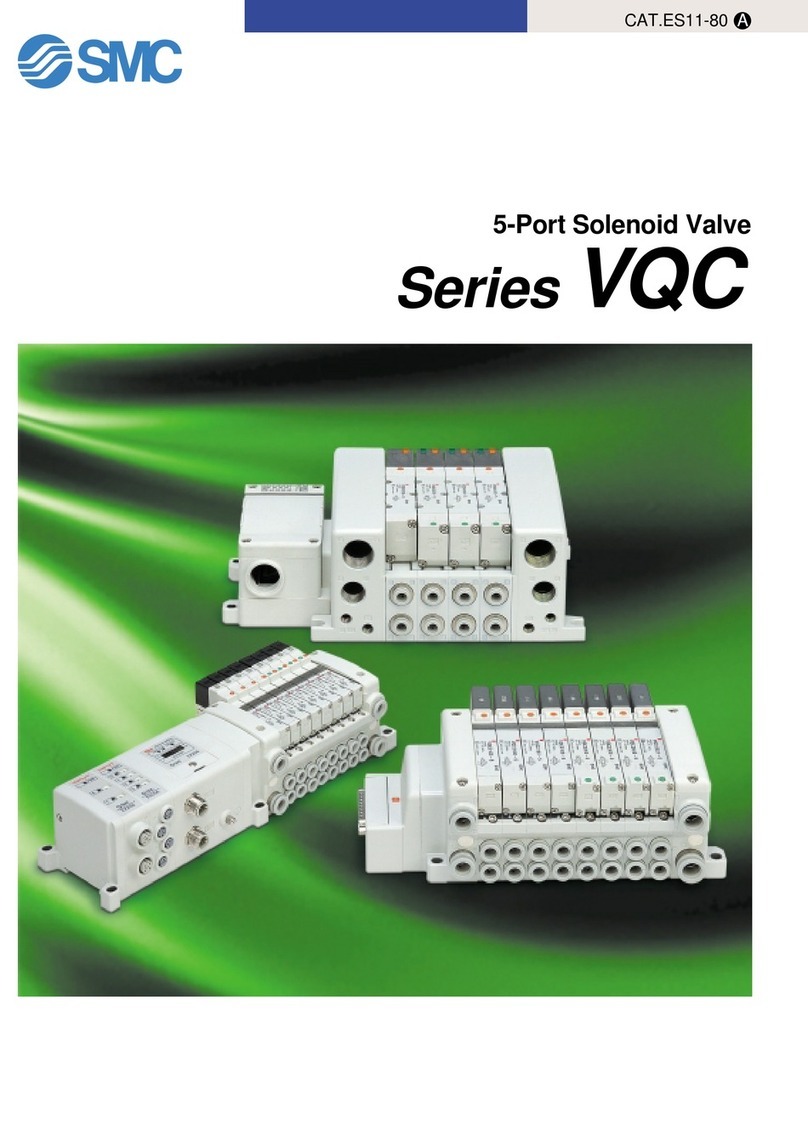
SMC Networks
SMC Networks VQC1000 manual
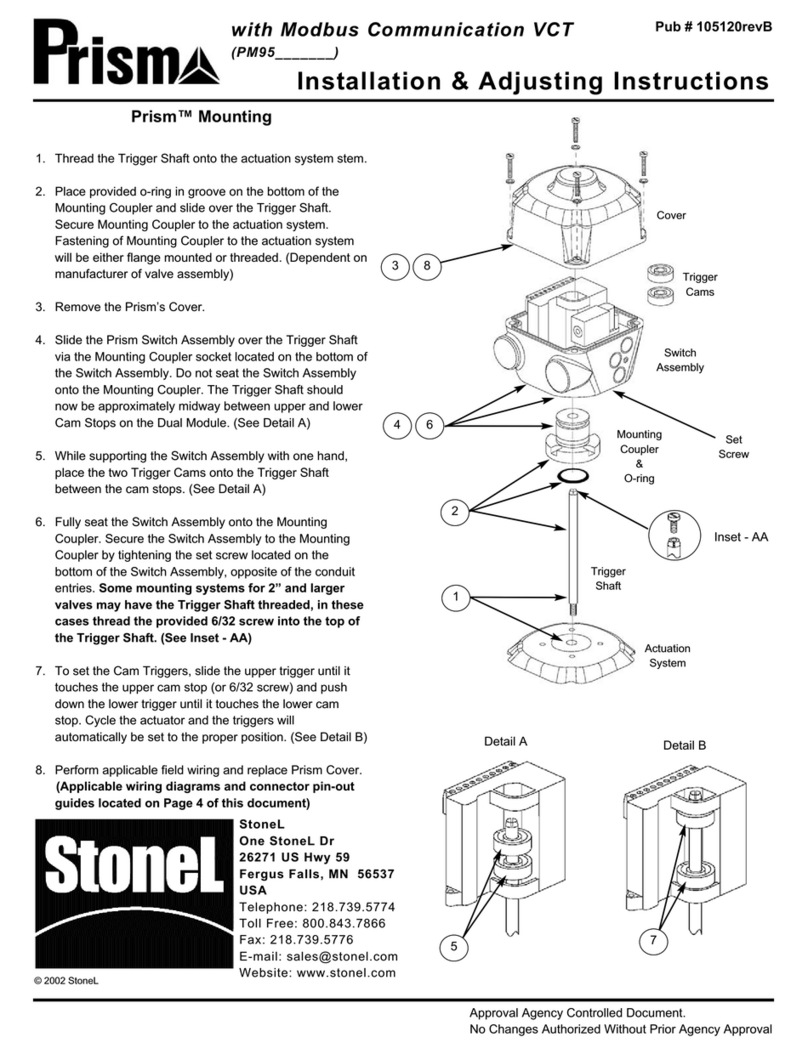
StoneL
StoneL Prism series Installation & Adjusting Instructions

